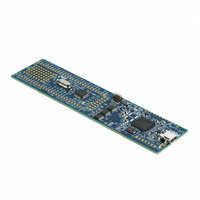OM11048 NXP Semiconductors, OM11048 Datasheet - Page 25

OM11048
Manufacturer Part Number
OM11048
Description
BOARD LPCXPRESSO LPC1343
Manufacturer
NXP Semiconductors
Series
LPCXpressor
Type
MCUr
Datasheet
1.OM11048.pdf
(62 pages)
Specifications of OM11048
Contents
Board, Software
Processor To Be Evaluated
LPC1343
Processor Series
LPC13xx
Interface Type
USB, I2C, UART
Maximum Operating Temperature
+ 85 C
Minimum Operating Temperature
- 40 C
Operating Supply Voltage
3.3 V
Tool Type
Demonstration Board
Core Architecture
ARM
Cpu Core
ARM Cortex M3
Data Bus Width
32 bit
Lead Free Status / RoHS Status
Lead free / RoHS Compliant
For Use With/related Products
LPC1343
Lead Free Status / Rohs Status
Lead free / RoHS Compliant
Other names
568-4947
Available stocks
Company
Part Number
Manufacturer
Quantity
Price
Part Number:
OM11048
Manufacturer:
NXP/恩智浦
Quantity:
20 000
Company:
Part Number:
OM11048Ј¬598
Manufacturer:
PH3
Quantity:
48
NXP Semiconductors
LPC1311_13_42_43
Product data sheet
7.17.5.1 Sleep mode
7.17.5.2 Deep-sleep mode
7.17.5.3 Deep power-down mode
7.17.5 Power control
7.18.1 Start logic
7.18 System control
The LPC1311/13/42/43 support a variety of power control features. There are three
special modes of processor power reduction: Sleep mode, Deep-sleep mode, and Deep
power-down mode. The CPU clock rate may also be controlled as needed by changing
clock sources, reconfiguring PLL values, and/or altering the CPU clock divider value. This
allows a trade-off of power versus processing speed based on application requirements.
In addition, a register is provided for shutting down the clocks to individual on-chip
peripherals, allowing fine tuning of power consumption by eliminating all dynamic power
use in any peripherals that are not required for the application. Selected peripherals have
their own clock divider which provides even better power control.
When Sleep mode is entered, the clock to the core is stopped. Resumption from the Sleep
mode does not need any special sequence but re-enabling the clock to the ARM core.
In Sleep mode, execution of instructions is suspended until either a reset or interrupt
occurs. Peripheral functions continue operation during Sleep mode and may generate
interrupts to cause the processor to resume execution. Sleep mode eliminates dynamic
power used by the processor itself, memory systems and related controllers, and internal
buses.
In Deep-sleep mode, the chip is in Sleep mode, and in addition all analog blocks are shut
down. As an exception, the user has the option to keep the watchdog oscillator and the
BOD circuit running for self-timed wake-up and BOD protection. Deep-sleep mode allows
for additional power savings.
Up to 40 pins total can serve as external wake-up pins to the start logic to wake up the
chip from Deep-sleep mode (see
Unless the watchdog oscillator is selected to run in Deep-sleep mode, the clock source
should be switched to IRC before entering Deep-sleep mode, because the IRC can be
switched on and off glitch-free.
In Deep power-down mode, power is shut off to the entire chip with the exception of the
WAKEUP pin. The LPC1311/13/42/43 can wake up from Deep power-down mode via the
WAKEUP pin.
The start logic connects external pins to corresponding interrupts in the NVIC. Each pin
shown in
NVIC interrupt vector table. The start logic pins can serve as external interrupt pins when
the chip is running. In addition, an input signal on the start logic pins can wake up the chip
from Deep-sleep mode when all clocks are shut down.
The start logic must be configured in the system configuration block and in the NVIC
before being used.
Table 3
All information provided in this document is subject to legal disclaimers.
and
Table 4
Rev. 3 — 10 August 2010
as input to the start logic has an individual interrupt in the
Section
7.18.1).
32-bit ARM Cortex-M3 microcontroller
LPC1311/13/42/43
© NXP B.V. 2010. All rights reserved.
25 of 62
















